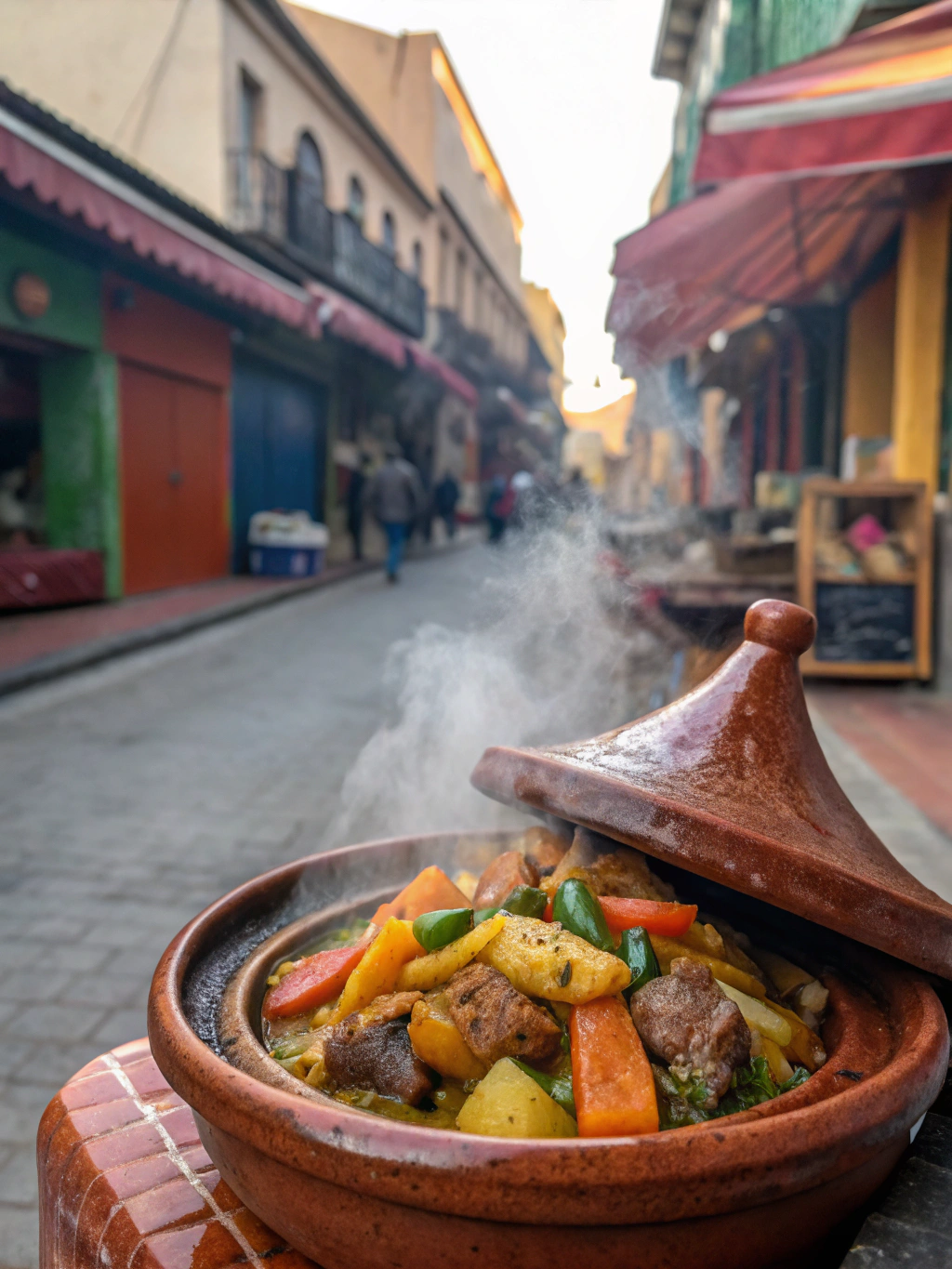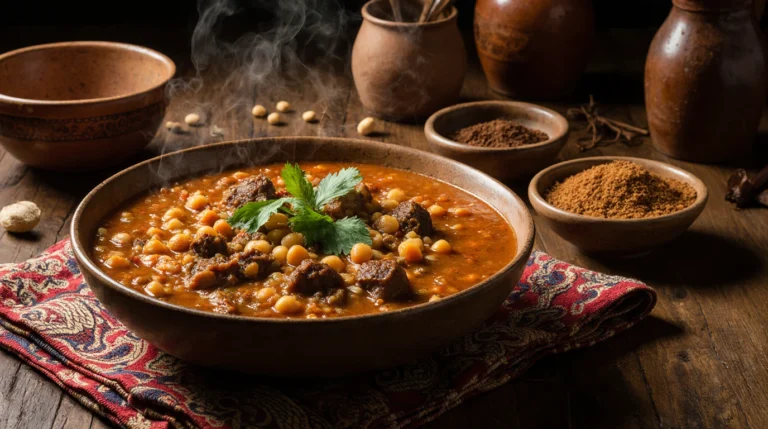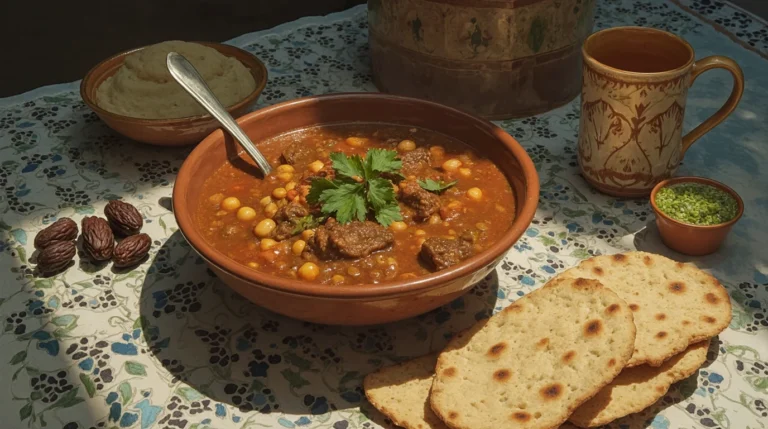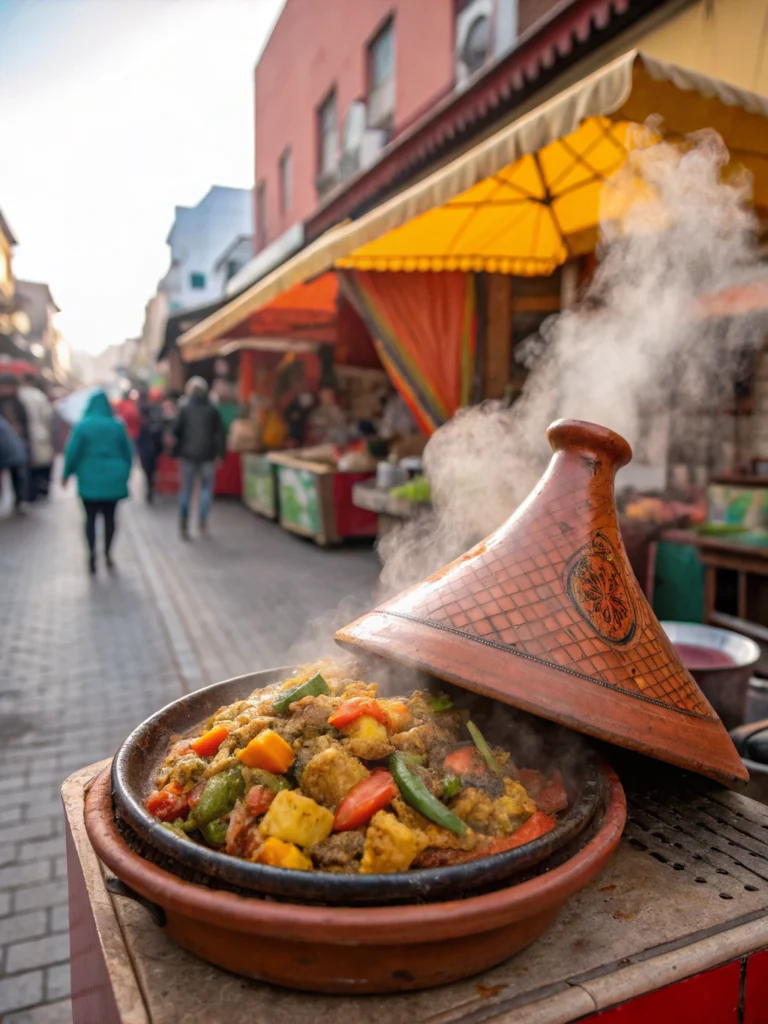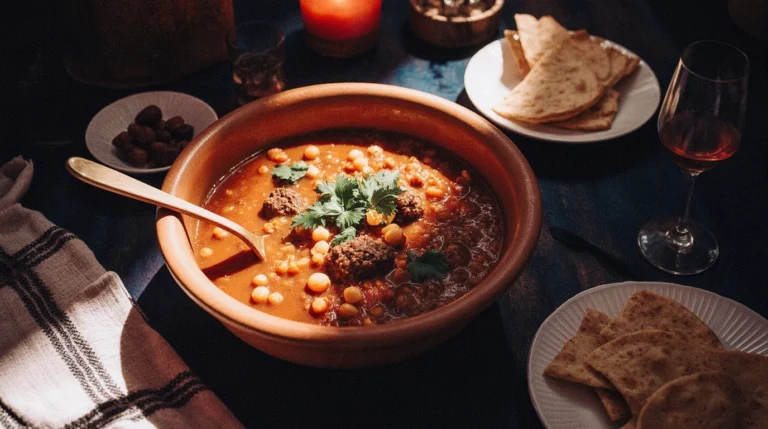Easy Moroccan Street Food Snacks to Make at Home
Have you ever found yourself craving the vibrant and flavorful tastes of Moroccan Street Food but felt intimidated by the thought of recreating these delicacies at home? Fear not, for we’re about to embark on a culinary adventure that will transport your taste buds to the bustling streets of Morocco, all from the comfort of your own kitchen.
Ingredients List
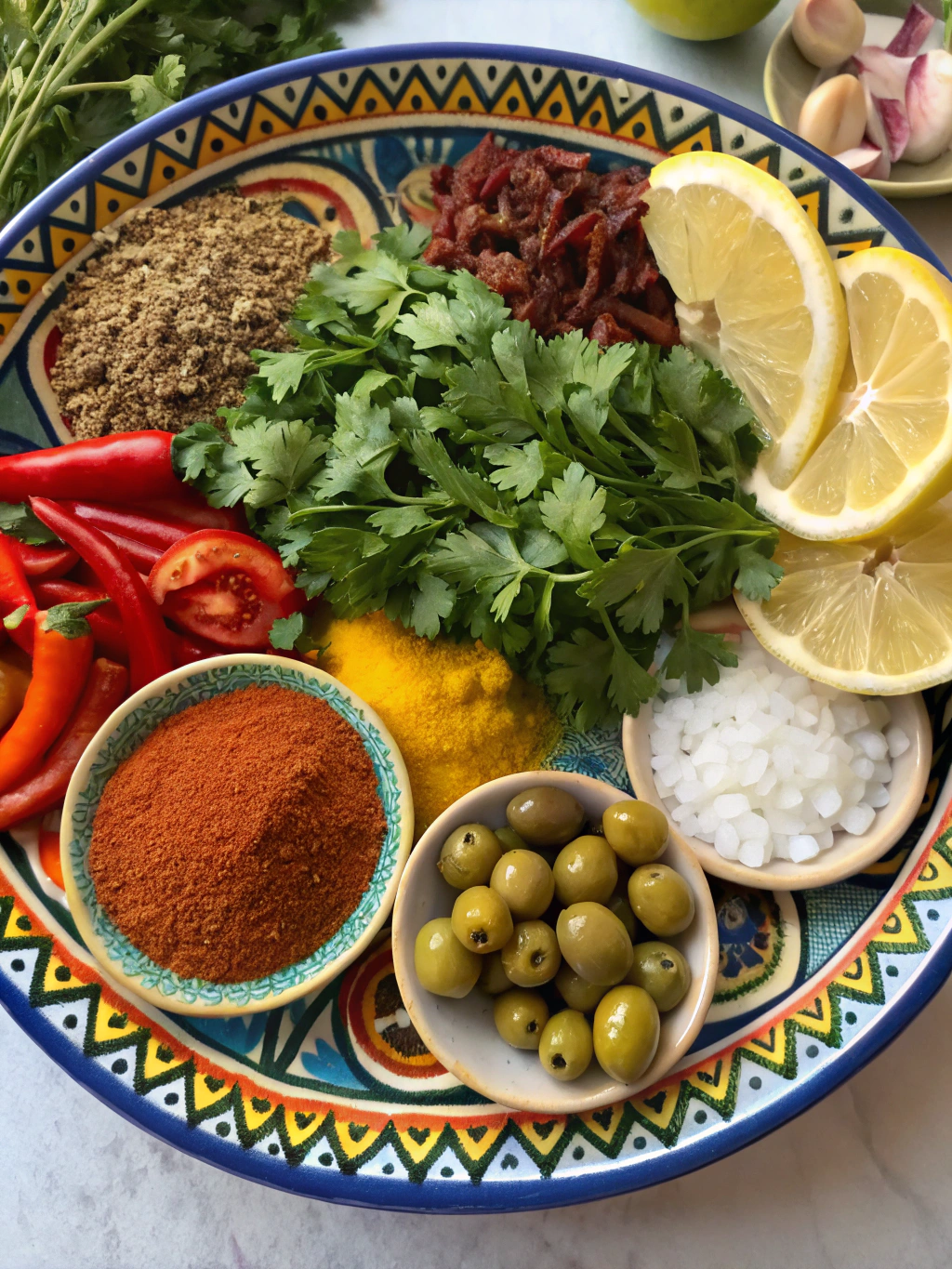
Before we dive into the recipes, let’s gather the essential ingredients that will bring the authentic flavors of Morocco to life:
- Semolina flour (or all-purpose flour as a substitute)
- Warm water
- Yeast
- Olive oil
- Ground cumin
- Ground coriander
- Ground cinnamon
- Paprika
- Honey (or agave nectar for a vegan option)
- Lemon juice
- Fresh cilantro (or parsley if you prefer)
- Harissa paste (for an extra kick of heat)
With these aromatic ingredients at your fingertips, you’ll be well on your way to recreating the authentic flavors of Moroccan Street Food right in your own kitchen.
Timing
Preparing these delectable snacks is a labor of love, but the time investment is well worth it. The total preparation time for most recipes ranges from 45 minutes to 1 hour and 30 minutes, depending on the complexity of the dish. However, the active cooking time is typically around 20-30 minutes, leaving ample time for the flavors to meld and develop.
Compared to the time it would take to travel to Morocco and experience the street food scene firsthand, these recipes offer a convenient and cost-effective solution, allowing you to savor the flavors of Morocco in a fraction of the time.
Step-by-Step Instructions
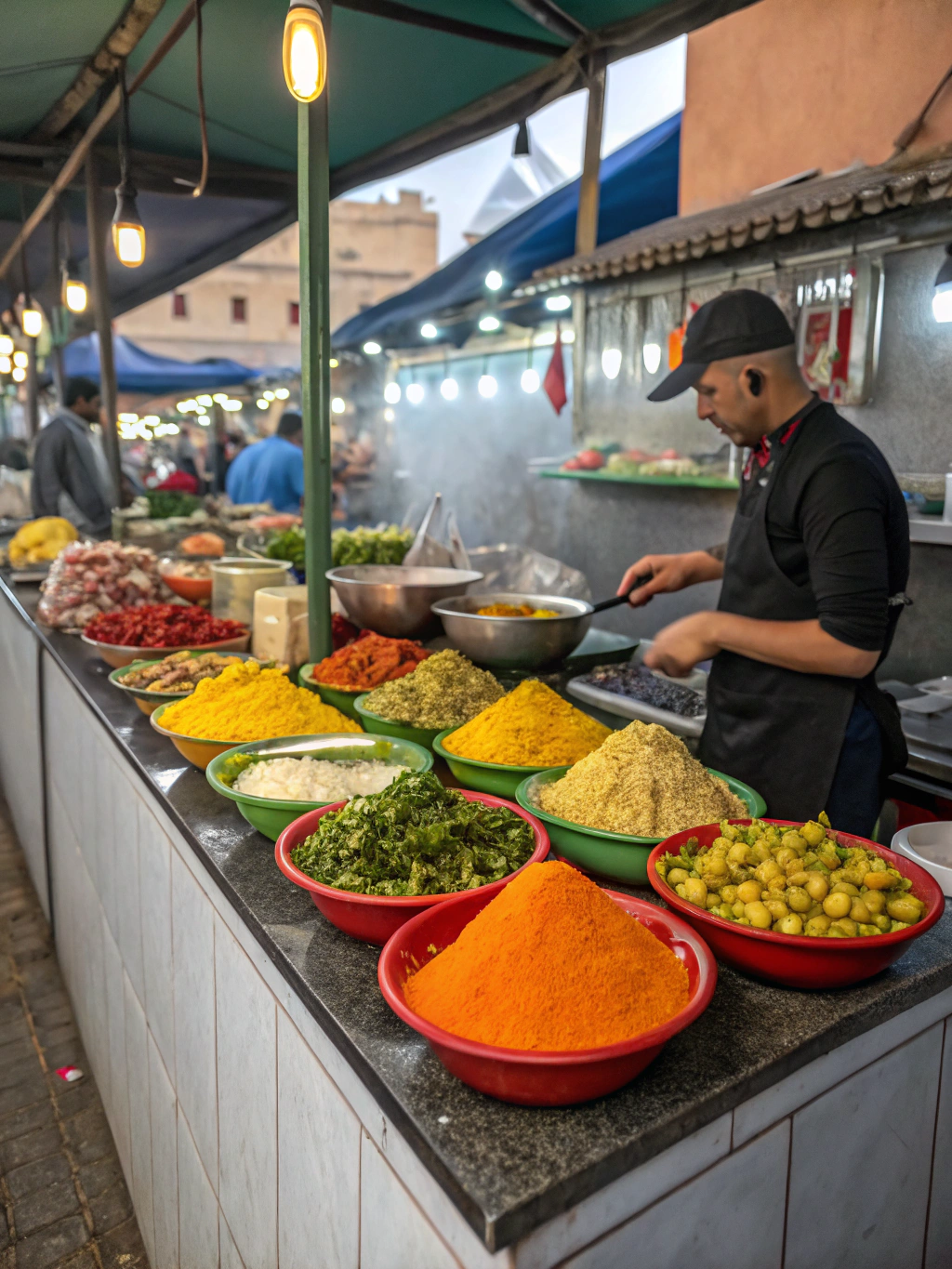
Step 1: Prepare the Dough
In a large bowl, combine the semolina flour (or all-purpose flour), yeast, and a pinch of salt. Gradually add warm water and olive oil, kneading the mixture until a smooth and elastic dough forms. Cover the dough and let it rest for 30 minutes to an hour, allowing the yeast to work its magic.
Step 2: Infuse the Flavors
In a small bowl, mix together the ground cumin, coriander, cinnamon, paprika, honey (or agave nectar), lemon juice, and chopped cilantro (or parsley). This aromatic blend will be the star of the show, infusing your Easy Moroccan snacks with the quintessential flavors of Morocco.
Step 3: Shape and Fry
Divide the rested dough into equal portions and shape them into desired forms, such as small balls or flat discs. In a deep pan or skillet, heat a generous amount of olive oil over medium-high heat. Carefully fry the shaped dough until golden brown on both sides, ensuring a crispy exterior and a tender interior.
Step 4: Garnish and Serve
Once the fried dough pieces are cooked to perfection, transfer them to a plate lined with paper towels to absorb any excess oil. Drizzle the aromatic spice blend over the top, allowing the flavors to soak in. Optionally, you can also sprinkle a pinch of harissa paste for an extra kick of heat.
Serve these Moroccan Street Food snacks hot and fresh, accompanied by a refreshing mint tea or a tangy yogurt dip for an authentic Moroccan experience.
Nutritional Information
While these Moroccan Street Food snacks are undoubtedly delicious, it’s essential to be mindful of their nutritional content. Each serving (approximately 3-4 pieces) contains:
- Calories: 250-300
- Total Fat: 12-15g
- Carbohydrates: 30-35g
- Protein: 5-7g
- Fiber: 2-3g
It’s worth noting that the use of semolina flour and olive oil contributes to the higher fat content, but these healthy fats are an integral part of the Mediterranean diet, which has been linked to numerous health benefits.
Healthier Alternatives for the Recipe
If you’re looking to lighten up these Moroccan Street Food snacks without sacrificing flavor, consider the following modifications:
- Substitute whole wheat flour or a gluten-free flour blend for a higher fiber content.
- Use non-stick cooking spray or an air fryer instead of deep-frying to reduce the amount of oil needed.
- Incorporate more vegetables, such as grated carrots or zucchini, into the dough for added nutrients and moisture.
- Opt for a yogurt-based dipping sauce instead of a creamy one to boost protein and probiotics.
Serving Suggestions
While these Moroccan Street Food snacks are delightful on their own, they also pair beautifully with a variety of accompaniments. Consider serving them alongside:
- A refreshing cucumber and tomato salad for a burst of freshness.
- A hearty lentil or chickpea stew for a satisfying and protein-packed meal.
- A vibrant array of colorful dips, such as hummus, baba ghanoush, or tzatziki, for dipping and sharing.
- A fragrant mint tea or traditional Moroccan coffee for an authentic cultural experience.
Common Mistakes to Avoid
While these Moroccan Street Food snacks are relatively straightforward to prepare, there are a few common pitfalls to be aware of:
- Overworking the dough, which can result in a tough and chewy texture.
- Frying at too high a temperature, leading to burnt exteriors and undercooked interiors.
- Skimping on the spices and aromatics, which are the true essence of Moroccan cuisine.
- Neglecting to let the dough rest, preventing proper gluten development and rise.
By being mindful of these potential mistakes, you’ll be well on your way to creating picture-perfect Moroccan Street Food snacks every time.
Storing Tips for the Recipe
While these Moroccan Street Food snacks are best enjoyed fresh and hot, you can store any leftovers for later enjoyment. Here are some tips for keeping them fresh:
- Allow the snacks to cool completely before storing them in an airtight container or resealable bag.
- Refrigerate the snacks for up to 3-4 days, ensuring they remain crispy and flavorful.
- For longer storage, you can freeze the snacks for up to 2-3 months. Simply reheat them in the oven or toaster oven until crisp and heated through.
- Consider preparing the dough in advance and storing it in the refrigerator for up to 3 days, allowing you to fry fresh batches as needed.
Conclusion
By following these recipes and tips, you’ll be able to recreate the vibrant and flavorful Moroccan Street Food snacks right in your own kitchen. These delectable treats are not only a delightful culinary experience but also a window into the rich cultural heritage of Morocco.
So, what are you waiting for? Gather your ingredients, roll up your sleeves, and embark on this flavorful journey. Once you’ve mastered these recipes, be sure to share your creations with friends and family, or even consider hosting a Moroccan-themed gathering to showcase your newfound skills. And if you’re feeling adventurous, explore more traditional Moroccan dishes to further expand your culinary horizons. Bon appétit!

